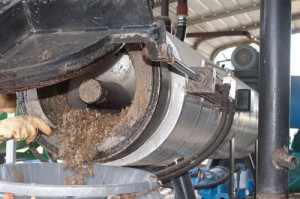 A company that says it is “introducing biodiesel to the petroeum industry” has announced the first biodiesel terminal in South Texas.
A company that says it is “introducing biodiesel to the petroeum industry” has announced the first biodiesel terminal in South Texas.
This press release posted on EarthTimes.org says Gulf Hydrocarbon will offer biodiesel at the RTW Terminal in Brownsville:
Gulf Hydrocarbon’s new terminal will offer convenient access to biodiesel truck loading rack. This new gateway for US-made biodiesel will offer easy availability and can serve the local and Mexican distribution-based businesses. In addition to truck access, the terminals also marine transport and the Brownsville Rio Grande International Rail Road serves the terminal for an efficient means of rail transportation.
Jess Hewitt, President, Gulf Hydrocarbon is full of optimism about introducing biodiesel to the South Texas market, “With the addition of our South Texas terminal distribution point we can now make biodiesel available to new markets in the Texas valley region, a vast and productive agricultural area, and new markets for renewable fuel in the frontera border states in Mexico. South Texas school buses, farms and industry now have access to a powerful fuel that is green and fights air pollution. These organizations are eligible for state and federal grants that pay for the addition of biodiesel to fleet and school buses who can now use biodiesel to fight harmful diesel particulate emissions. We intend to spend a good deal of time and effort educating related industries about these government incentives and benefits to the environment.”
The release goes on to say that the biodiesel at the RTW terminal will meet all ASTM D6751 standards. If you’d like to find out more, Hewitt will talk about biodiesel, the new Renewable Fuel Standards and the local economic impact at the upcoming 2010 Energy Expo on January 21, 2010 in Brownsville.


 The cold conditions of Canada will put biodiesel to the test as our friends north of the border take part in a year-long test of the green fuel.
The cold conditions of Canada will put biodiesel to the test as our friends north of the border take part in a year-long test of the green fuel. I found an interesting piece by Lyle Estill, a founder of
I found an interesting piece by Lyle Estill, a founder of  By the summer of 2009 the biodiesel industry was on the ropes. Feedstocks were too expensive to be used for fuel.
By the summer of 2009 the biodiesel industry was on the ropes. Feedstocks were too expensive to be used for fuel. Questions by the Secretary of Agriculture himself about the USDA’s and EPA’s climate change analysis has prompted the two ranking members of the U.S. Senate and House Ag Committees to ask questions as well.
Questions by the Secretary of Agriculture himself about the USDA’s and EPA’s climate change analysis has prompted the two ranking members of the U.S. Senate and House Ag Committees to ask questions as well. Over 127 million gallons of ethanol was produced in the state of Nebraska in September; a record high for the state and an increase of 8.6% since 2008.
Over 127 million gallons of ethanol was produced in the state of Nebraska in September; a record high for the state and an increase of 8.6% since 2008.




 Roger and Margie Johnson of Exeter, Nebraska (seen far left) were the grand prize winners in the
Roger and Margie Johnson of Exeter, Nebraska (seen far left) were the grand prize winners in the